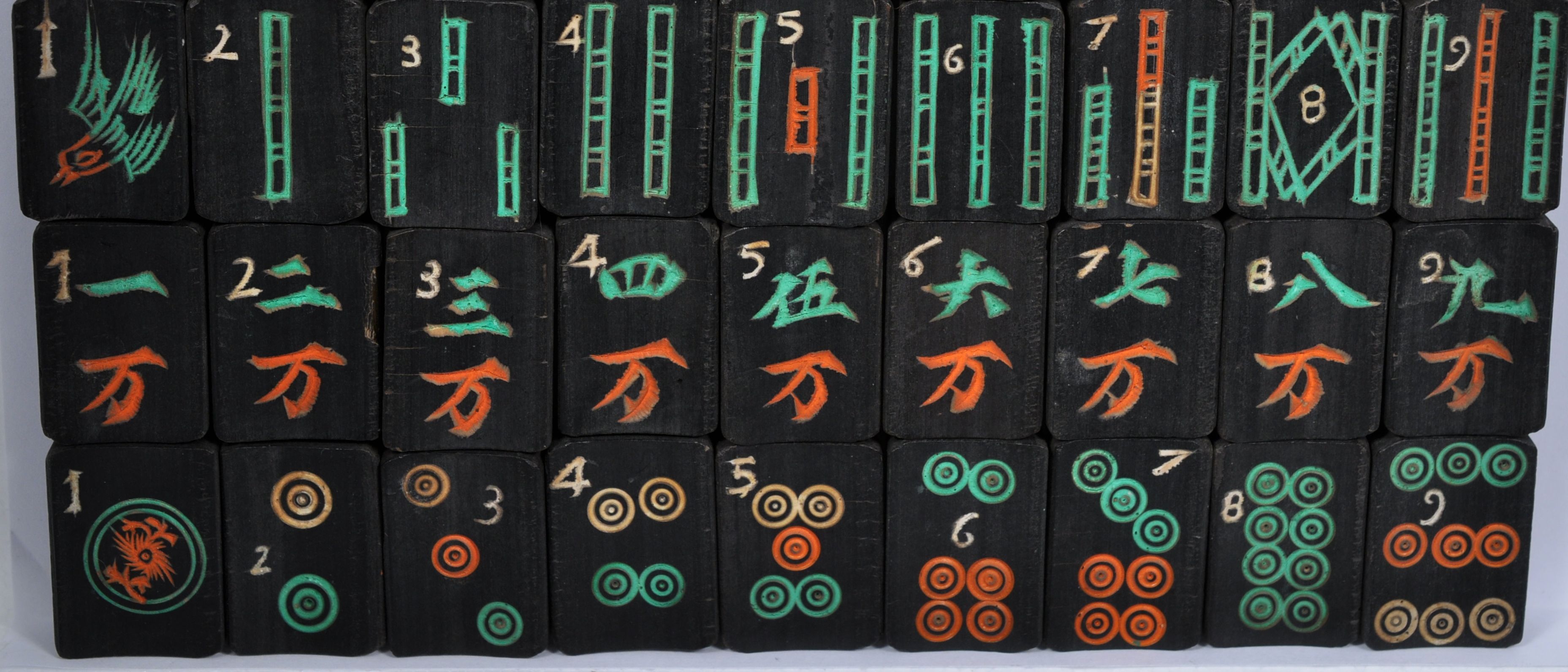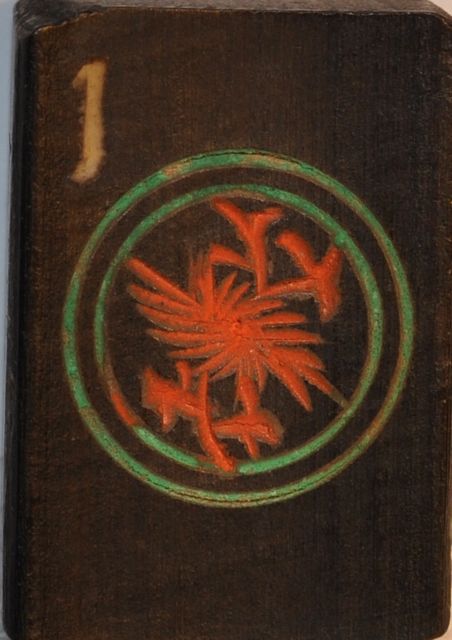Oftentimes black bamboo sets have more unusual designs than found on other tiles. This one is no exception. Given the very great challenge of carving such a hard surface as bamboo, the carver did a wonderful job. To make black bamboo mahjong tiles, the bamboo is first dyed, then carved and painted. The black background makes the colors pop.
The One Dot makes it a stand-out, with its very delicately carved flower center, with other Dots the circles within circles. The bird is referred to as a darting sparrow by Michael Stanwick. The other Bams are simple rods, and the Craks the simple Wan. Artists working on these black sets handle the colors of the numbers and the suits differently, as can be seen on Stanwick's site as well. The colors here, orange, blue, red and white and the Bam shapes are different from the Black Bamboo set discussed in January. To see that set click here
Stanwick has a few sets with similar One Bams on his website:
http://themahjongtileset.co.uk/tile-set-diversity/tile-set-diversity-2-0/
The Winds, Dragons and Flowers are delightful too. The White Dragon is a blank black tile, the Green is White, and the Red is red. The Flowers on the right are plum blossom, orchid, bamboo and chrysanthemum, the four gentlemen.
To read more about the Four Gentlemen in wikipedia, click here.




